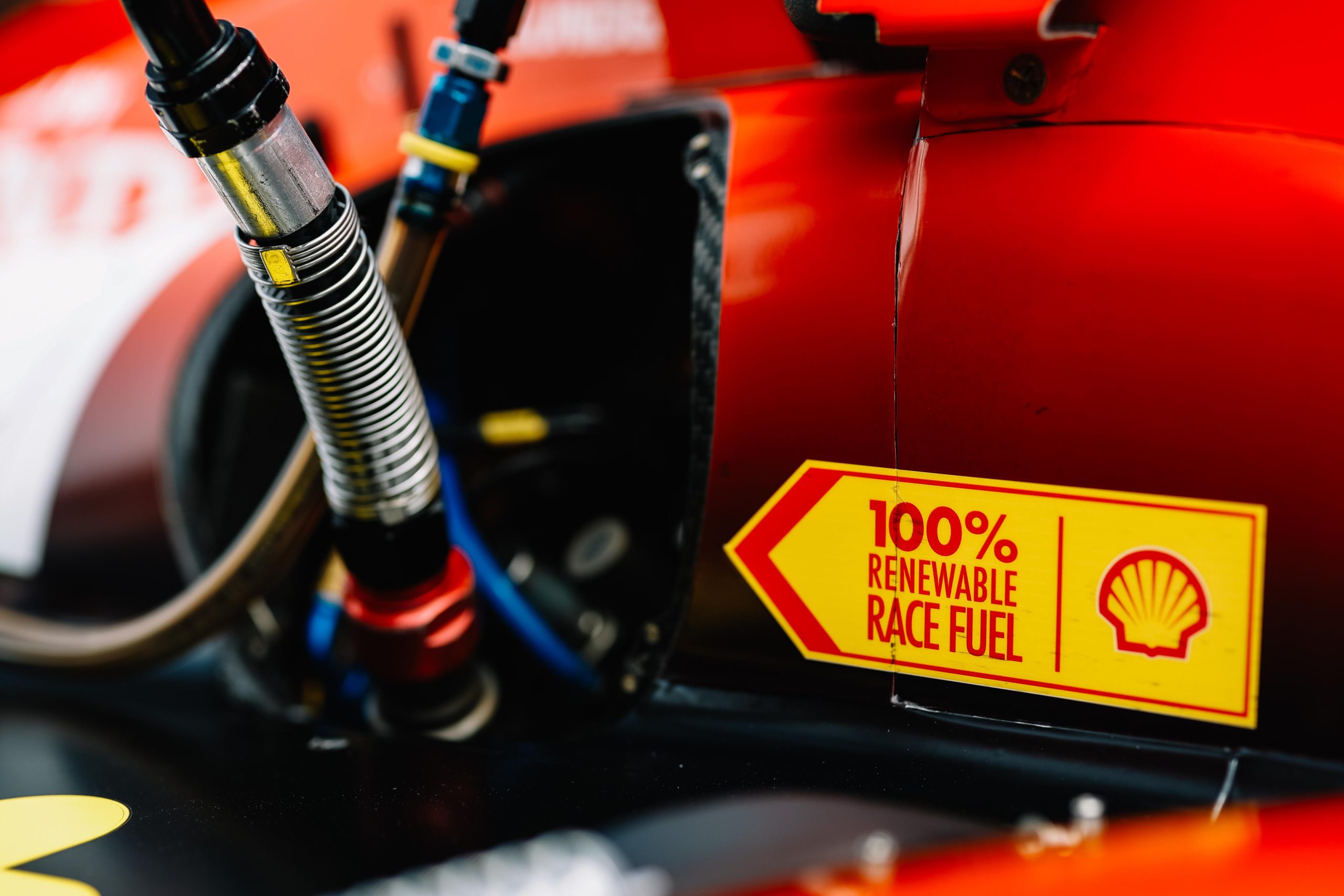How much does the steering wheel of an IndyCar cost?


How much does the steering wheel of an IndyCar cost? The answer might surprise you: a top-of-the-line IndyCar steering wheel can cost upwards of $40,000. That’s right, the small but crucial piece of equipment that drivers use to control their cars at speeds of over 200 miles per hour is one of the most expensive parts of the vehicle. But why is the steering wheel so expensive, and what makes it worth the investment? Let’s take a closer look.
Table of Contents
Key Features and Capabilities of IndyCar Steering Wheels
IndyCar steering wheels are not your ordinary car accessories. They are equipped with cutting-edge technology that takes performance to the next level. Let’s dive into the key features and capabilities that make these steering wheels a vital component in any IndyCar race.
Advanced Technology for Optimal Performance
Every second counts. That’s why the steering wheels are packed with advanced technology to help drivers navigate the track with precision and speed. One such example is the CCW MKII Pro Sim system, which revolutionizes the way drivers interact with their cars.
The CCW MKII Pro Sim system integrates seamlessly with IndyCar steering wheels, providing an immersive experience for drivers. It offers high-resolution displays that provide crucial information at a glance, such as lap times, fuel levels, and tire pressures. This real-time data allows drivers to make split-second decisions on strategy and adjust their driving style accordingly.
Buttons, Switches, and Toggles for Control
IndyCar steering wheels resemble a control panel more than just a wheel. They feature an array of buttons, switches, and toggles that give drivers complete control over various aspects of the car. These controls are strategically placed within easy reach of the driver’s fingertips for quick access during intense races.
Here are some examples of what these buttons can be used for:
- Adjusting brake bias: Drivers can fine-tune the distribution of braking force between front and rear tires.
- Changing engine modes: Different engine modes optimize power delivery based on specific race conditions.
- Activating push-to-pass: This feature provides an extra boost of horsepower for overtaking opponents.
- Controlling fuel mixture: Drivers can adjust the air-fuel ratio to maximize performance while conserving fuel.
With all these controls at their disposal, drivers have unparalleled flexibility in adapting their racing strategy on-the-fly.
Personalization Options for Drivers
Just like a favorite pair of racing gloves, IndyCar drivers can personalize their steering wheels to suit their preferences. Customization options allow them to fine-tune the layout, functionality, and even the look of their steering wheels.
Drivers can choose from a range of materials for the wheel itself—whether it’s leather, carbon fiber, or a combination of both. They can also select the color scheme and design that resonates with their individual style. These personal touches not only add flair but also create a sense of connection between the driver and their machine.
Enhancing Control, Safety, and Race Strategy
The advanced features and customization options offered by IndyCar steering wheels greatly enhance driver control, safety, and overall race strategy. The ability to access vital information at a glance enables drivers to make split-second decisions without losing focus on the track ahead.
With precise control over various car settings through buttons, switches, and toggles, drivers can optimize performance while ensuring safety. Fine-tuning brake bias or adjusting engine modes allows them to adapt quickly to changing track conditions or respond strategically during critical moments in a race.
Importance of Fuel Map Switch and Fuel Reset Button
The fuel map switch and fuel reset button are two essential features in an IndyCar that play a crucial role in managing fuel efficiency during races. These buttons allow drivers to optimize their engine’s fuel mixture and reset fuel calculations, enabling them to make strategic decisions on the track.
The Fuel Map Switch: Maximizing Performance
One of the primary functions of the fuel map switch is to adjust the engine’s fuel mixture based on the racing conditions. Different tracks, weather conditions, and race strategies require varying levels of power output from the engine. By toggling the fuel map switch, drivers can fine-tune the air-to-fuel ratio, optimizing performance while conserving precious fuel.
For instance, during high-speed sections where maximum power is needed, drivers can select a more aggressive setting on the fuel map switch. This allows for a richer air-to-fuel mixture, delivering increased horsepower and acceleration when it matters most. On the other hand, during long straightaways or caution periods where conserving fuel becomes crucial, switching to a leaner mixture helps extend mileage.
The Fuel Reset Button: Pit Stop Efficiency
Pit stops are critical moments in any race where teams refuel quickly while making necessary adjustments. The fuel reset button comes into play during these pit stops or unexpected situations that require recalculating how much remaining fuel is available.
By pressing this button at designated times or when instructed by their crew chief, drivers can initiate a recalculation process within their car’s onboard computer system. This ensures accurate measurements of remaining fuel and enables teams to strategize better for upcoming segments of the race.
Unexpected situations such as accidents or safety car periods may disrupt initial plans. In such cases, pressing the reset button allows for quick adjustments without compromising accuracy or wasting valuable time manually calculating remaining fuel quantities.
Impact on Race Strategy and Success
Efficient utilization of these buttons can significantly impact a team’s chances of success on the track. Properly managing fuel consumption throughout a race can reduce the number of pit stops required, giving drivers an advantage over their competitors.
By optimizing the fuel mixture through the fuel map switch and recalculating available fuel using the reset button, teams can strategically plan when to push for maximum performance and when to conserve fuel. This delicate balance between power and efficiency is crucial in endurance races where every drop of fuel counts.
Enhancing Control and Performance with Weight Jacker Buttons
Weight jacker buttons are an essential feature in the world of IndyCar racing, allowing drivers to fine-tune their control and optimize performance on the track. These buttons enable drivers to adjust the weight distribution within the car while racing, providing them with a competitive edge over their opponents.
One of the key benefits of weight jacker buttons is their ability to balance weight between the front and rear tires. By adjusting the weight distribution, drivers can optimize handling and improve overall performance. This becomes particularly crucial when navigating different track surfaces that demand varying levels of grip.
Weight distribution plays a vital role. By using weight jacker buttons, drivers can shift more weight onto specific tires during turns, enhancing traction and stability. The precise adjustments made through these buttons allow for better control as drivers maneuver through challenging corners at high speeds.
Take for instance Josef Newgarden’s impressive victory at Bommarito Automotive Group 500 in 2019. Throughout the race, Newgarden skillfully utilized his weight jacker buttons to adapt his car’s handling characteristics based on changing track conditions. This strategic use of weight distribution allowed him to maintain superior control over his vehicle and ultimately secure a well-deserved win.
The effectiveness of weight jacker buttons lies not only in their ability to enhance control but also in their impact on overall performance. By fine-tuning weight distribution, drivers can maximize acceleration and deceleration capabilities, enabling quicker lap times. This advantage becomes especially evident when competing against tight margins where every fraction of a second counts.
To fully grasp how crucial this feature is, one must consider its application across various scenarios encountered during races. On tracks with long straightaways followed by sharp turns, finding an optimal balance between front and rear tire grip is paramount. Weight jacker buttons provide drivers with the flexibility needed to adjust their cars’ behavior according to the demands of each section of the track.
In addition to enhancing performance, weight jacker buttons also demand a high level of skill and finesse from drivers. The ability to make split-second decisions on weight distribution adjustments can be the difference between a successful maneuver and a missed opportunity. It requires an intimate understanding of how weight transfer affects handling dynamics, as well as the ability to adapt quickly to changing circumstances during a race.
Utilizing the Reverse Gear Button for Strategic Maneuvers
The reverse gear button in an IndyCar is a vital tool that allows drivers to quickly move backward during specific racing scenarios. It proves especially useful when avoiding collisions or getting out of tight spots rapidly. By being able to engage reverse gear swiftly, drivers can save valuable time during critical moments in a race, giving them a competitive edge on the track.
To fully comprehend the significance of the reverse gear button, it is essential to understand its role within the overall mechanics of an IndyCar. These high-performance vehicles are equipped with advanced technology and engineering prowess to deliver exceptional power and handling capabilities at incredible speeds. The reverse gear button is just one component that contributes to their remarkable performance.
When drivers find themselves in situations where they need to rapidly change direction or extricate themselves from unfavorable positions, such as when another vehicle unexpectedly cuts them off or when they overshoot a corner, engaging reverse gear becomes crucial. In these instances, relying solely on conventional forward gears would waste precious time and potentially hinder their chances of success.
By utilizing the reverse gear button strategically, drivers can execute quick and efficient maneuvers on the track. For example, if an opponent attempts to overtake from the side or front while approaching a corner, a skilled driver can swiftly shift into reverse gear using paddles mounted on their steering wheel. This unexpected move can catch opponents off guard and provide an opportunity for the driver to regain control of their position.
Moreover, having easy access to the reverse gear button also proves advantageous in pit lanes. When entering or exiting pits during races, space is often limited and maneuvering becomes challenging due to numerous vehicles moving in close proximity. In such situations, being able to engage reverse gear promptly enables drivers to navigate through congested areas more effectively.
The importance of mastering this technique cannot be overstated. Drivers must possess exceptional reflexes and situational awareness so that they can make split-second decisions to engage reverse gear at the opportune moment. This skill is honed through extensive training and experience, as it requires precise timing and coordination of various elements, including shift lights, engine RPMs, clutch control, and vehicle dynamics.
Dash Scroll Buttons or Toggles: Navigating Critical Information
Dash scroll buttons are an essential feature in Indycar racing, allowing drivers to effortlessly cycle through the important data displayed on their car’s dashboard. These buttons serve as a gateway to real-time information about engine performance, tire conditions, and lap times, providing drivers with crucial insights that can greatly impact their race strategies.
In the fast-paced world of Indycar racing, access to critical data is paramount. The ability to quickly navigate through various information pages on the dashboard ensures that drivers stay informed and make split-second decisions based on accurate and up-to-date information. With just a press of a button or toggle, they can effortlessly switch between different screens displaying vital details about their car’s performance.
Imagine hurtling down the straight at breakneck speeds, your focus solely on maintaining control and seeking any advantage over your competitors. In such intense moments, having easy access to critical data becomes a game-changer. Dash scroll buttons allow drivers to swiftly glance at engine parameters like RPM (revolutions per minute), oil temperature, and fuel levels without diverting their attention from the track ahead.
Tire conditions play a pivotal role in determining race strategy. By utilizing these buttons, drivers can effortlessly monitor tire pressures and temperatures throughout the course of a race. This real-time feedback enables them to adjust their driving style accordingly or even make informed pit stop decisions when necessary.
Lap times are another crucial aspect of Indycar racing where every second counts. With dash scroll buttons at their fingertips, drivers can quickly analyze lap times from previous sessions or compare them with competitors’ performances. This valuable insight helps them fine-tune their approach for optimal speed and consistency.
Efficient navigation of this wealth of information is not just convenient; it is vital for maintaining focus during high-stakes races. The layout of these buttons is thoughtfully designed with ergonomics in mind so that drivers can intuitively locate and activate them without any distractions. This ensures that their attention remains firmly on the track while still being able to access critical data at a moment’s notice.
The Complexity and Intricacies of IndyCar Steering Wheels
IndyCar steering wheels are not your average car accessory. They are highly sophisticated pieces of technology that go far beyond simply turning the front wheels. These multifunctional controls incorporate a wide range of features and require extensive driver training and familiarity to operate effectively.
1. IndyCar steering wheels are highly sophisticated pieces of technology.
The steering wheel in an IndyCar is more than just a wheel; it’s a control center packed with advanced engineering. It is designed to provide drivers with quick access to various functions while keeping their hands firmly on the wheel. From adjusting fuel mixtures to changing brake balance, these steering wheels have it all.
2. They incorporate a wide range of features and controls that require extensive driver training and familiarity.
To truly master an IndyCar steering wheel, drivers must invest time and effort into understanding its numerous features and controls. Each button, switch, or dial serves a specific purpose, allowing drivers to make instantaneous adjustments during high-speed races.
For example, some IndyCar teams use Cosworth steering wheels equipped with LED lights that indicate crucial information such as engine temperature or tire wear. Penske Racing takes it a step further by incorporating customizable screens into their steering wheels, providing real-time data on lap times, fuel consumption, and other vital race metrics.
3. Mastering the intricacies of these steering wheels can take time and practice.
Becoming proficient in operating an IndyCar’s steering wheel is no easy feat—it requires countless hours of practice on the track and in simulators for both aspiring racers and seasoned professionals alike.
Sim racers play a significant role in this process as they allow drivers to familiarize themselves with different scenarios without risking damage to real cars or compromising safety on the track. By using simulators paired with realistic replicas of IndyCar steering wheels, drivers can refine their skills before hitting the racecourse.
4. Understanding their complexity is essential for drivers aiming to excel in IndyCar racing.
In the fast-paced world of IndyCar racing, every split-second decision matters. Drivers who can swiftly navigate through the various controls on their steering wheels gain a competitive edge over others.
The engineering behind these wheels is a testament to the dedication and innovation within the sport. The teams responsible for designing and manufacturing them continually push boundaries to enhance performance and safety.
Cost Range and Significance of IndyCar Steering Wheels
In conclusion, IndyCar steering wheels are not your average car accessories. They are sophisticated pieces of equipment designed to enhance control and performance on the racetrack. The cost of an IndyCar steering wheel can vary depending on various factors such as customization options and technological advancements. However, it is safe to say that these high-performance steering wheels come with a hefty price tag.
Throughout this article, we have explored the key features and capabilities of IndyCar steering wheels. We discussed the importance of fuel map switches and fuel reset buttons, which allow drivers to optimize their fuel consumption during races. The weight jacker buttons were also highlighted as crucial tools for adjusting the car’s weight distribution, thereby improving handling and overall performance.
We touched upon how the reverse gear button can be utilized strategically for maneuvering in tight situations. The dash scroll buttons or toggles were emphasized as essential for navigating critical information displayed on the dashboard while maintaining focus on the race.
It is important to note that IndyCar steering wheels are complex and intricate devices that require skill and expertise to operate effectively. Drivers must familiarize themselves with all the features and functionalities to make split-second decisions during races.
Considering all these aspects, investing in a high-quality IndyCar steering wheel becomes a significant decision for professional drivers looking to gain a competitive edge on the track. While prices may vary, it is crucial not to compromise on quality when making this purchase.
To ensure you make an informed decision when choosing an IndyCar steering wheel, here are some frequently asked questions:
How much does the steering wheel of an IndyCar cost? – FAQs
Q: Can I customize my IndyCar steering wheel?
A: Yes! Many manufacturers offer customization options such as button layouts, color schemes, and materials used in construction.
Q: Are there any safety features built into IndyCar steering wheels?
A: Absolutely! Safety is paramount in motorsports. Steering wheels often include features like quick-release mechanisms and impact-absorbing materials.
Q: How long does an IndyCar steering wheel typically last?
A: The lifespan of a steering wheel can vary depending on usage and maintenance. However, with proper care, they can last for several seasons.
Q: Do all IndyCar drivers use the same type of steering wheel?
A: No, drivers have different preferences. Customization options allow them to tailor the equipment to their specific needs.
Q: Can I buy an IndyCar steering wheel as a non-professional driver?
A: While these steering wheels are primarily designed for professional racing, some manufacturers offer similar models for enthusiasts who want to experience a taste of the racing world.










